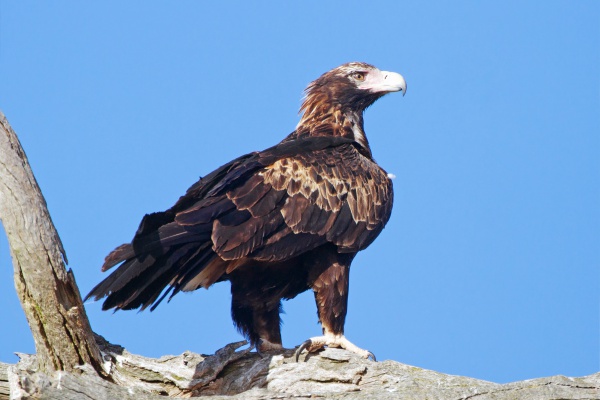Facts About Wedge-tailed eagle
The wedge-tailed eagle, Australia’s largest bird of prey, is also found in southern New Guinea, parts of Papua New Guinea, and Indonesia. This majestic bird is part of the Aquila genus, which includes 12 large, predominantly dark-colored booted eagles distributed worldwide. First described by John Latham in 1801, the wedge-tailed eagle has two subspecies: A. a. audax and A. a. fleayi.
Female wedge-tailed eagles are substantial, weighing between 3.0 and 5.8 kg, while males are slightly smaller. These eagles boast a wingspan of up to 2.84 meters and a length of up to 1.06 meters. One of their most distinctive features is their long, wedge-shaped tails. During the breeding season, they are known for their dramatic aerobatic displays.
Wedge-tailed eagles are widespread across Australia, including Tasmania, and inhabit various regions in southern New Guinea. They construct large stick nests and typically lay two eggs. The young rely on their parents for food for up to six months. Their diet includes a variety of prey such as rabbits, hares, reptiles, and even carrion.
These eagles are skilled aviators, capable of soaring for hours without flapping their wings and often reaching impressive altitudes. With their keen eyesight, they hunt primarily by spotting prey on the ground. As apex predators, they have no natural enemies but must defend their territory and nests from intruders.
The Tasmanian subspecies of the wedge-tailed eagle is endangered, with fewer than 200 pairs remaining in the wild. This eagle is a symbol of the Northern Territory and appears in the logos of various Australian organizations. Interestingly, they have been known to attack hang gliders, paragliders, and even unmanned aerial vehicles.
